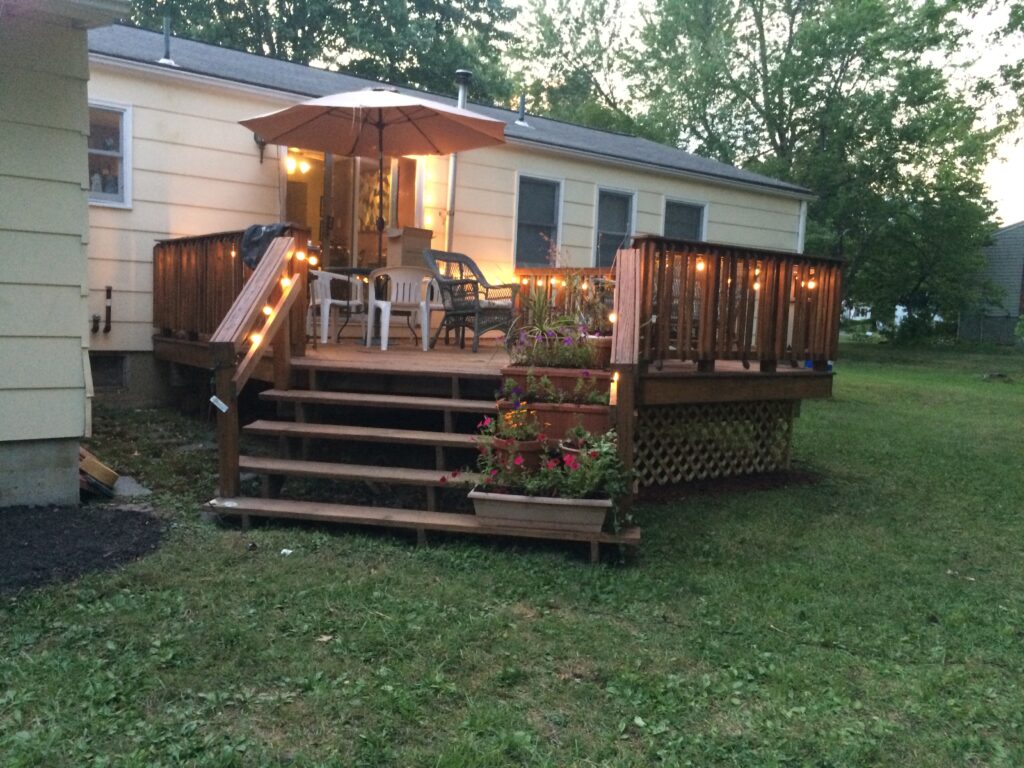Opinion: How to Do an Affordable Zero Energy “Ranchrofit.” Part 2

Darcy DuMont is planning a "ranchrofit" of her home in Orchard Valley. Photo: Darcy DuMont
Local and Green, March 2024
The following column appeared previously in the Amherst Bulletin.
This column will give you more ideas about that carbon emission-reducing retrofit you’ve been thinking about doing. Last month, I introduced my upcoming “ranchrofit” project in the Orchard Valley neighborhood of Amherst, and thoughts about how to cost effectively upgrade insulation, envelope and windows. This column will cover adding heat pumps for heating, air conditioning, and hot water, and replacing my siding and roof, Yikes. That sounds daunting. But again, it is opportunistic in that it’s time to do those things anyway.
Heat Pump Heating and Air Conditioning
I installed a Mitsubishi ductless air source heat pump in my living/dining/kitchen space about eight years ago and it is my main source of heating and air conditioning for the main living area. Heat pump air conditioners use much less electricity than that needed for conventional AC. I’m very happy with it. Now I’m considering more heat pumps for my three smallish bedrooms and 1 1/2 bathrooms and was advised NOT to install a unit in each room but to use a ducted system that would deliver the amount of heat and AC needed for each space.
I also would like the heat pump to use the latest, least greenhouse gas-emitting refrigerant.
MassSave HEAT program offers up to $50,000 in 0% loans to homeowners for projects that include heat pump systems, including heat pump hot water heater systems, solar panels, and energy storage.
Heat Pump Hot Water
I currently have on demand hot water attached to my oil furnace. I have the furnace turned on for about four months of cold weather to make sure pipes in the basement don’t burst and turned off the rest of the year except when I need it for hot water.
One of my hesitations about getting a heat pump hot water heater in the past was the fact that it would cool my basement too much. I was assured by one of my consultants that a basement heat pump hot water heater could be vented to the outside, solving that problem.
Solar Panels
Pioneer Valley Squared (PV2) installed my 6.2 kWh of solar energy with 18 panels, ten years ago. Wright Builders created a structure next to my house so that they could face mostly south and because PV2 wanted to try out a new concept in solar structures. Because, in the intervening years, I electrified my heating and my car, my usage now exceeds the amount my panels produce in a year. The new roof will be solar ready so that I can add more panels if needed.
Battery Storage
Storage is part of my future plan. I’d like to be able to use a V to G (vehicle to grid) program in order to use the EV battery as a generator if the grid goes down. Otherwise, battery storage right now is more impactful on an institutional or commercial basis rather than in random individual homes, in my opinion.
Siding and Decking
My ideal material for decking is cedar, though I’m also looking at local hemlock and pine. There is local white cedar available that doesn’t have to travel too far to get to Amherst. It makes sense to paint it to add to the longevity. I hope to reuse part or all of my current deck, rather than throwing it away. Throwing away my used siding, though, is a big problem because it very likely can’t be recycled.
Roof
A lot of the waste generated by a renovation project is from throwing away your roof. It was interesting to me to find out that you can put a new roof over an old asphalt roof unless your roof is substantially messed up. My roof job is complicated because I need to extend my overhangs. The houses in my neighborhood were strangely built without overhangs and that has caused more deterioration of the siding, especially on the north sides of homes. My ideal is a metal standing seam, solar ready roof.
What To Do Last
One thing I’ve learned through this process is not to calculate the amount of HVAC or solar panels needed before the house is insulated and made as airtight as possible. Once that is done, you may need far less HVAC and/or solar power to make it zero energy. My current solar panels may cover all my needs once I have new insulation. Though most homeowners won’t be doing a total zero energy retrofit, adding as much insulation as possible – in the attic, walls and basement, can make a huge difference in the amount of solar and HVAC needed.
Again, both the Local Energy Advocates and Amherst Energy and Climate Action Committee maintain a library of webinar recordings that include how to make your home more energy efficient or even zero energy.
Darcy DuMont is a former town councilor and sponsor of the legislation creating the Amherst Energy and Climate Action Committee. She is a founding member of Zero Waste Amherst, Local Energy Advocates of Western MA, and the Amherst Climate Justice Alliance and a non-voting member of Valley Green Energy Working Group. She can be contacted at dumint140@gmail.com.
